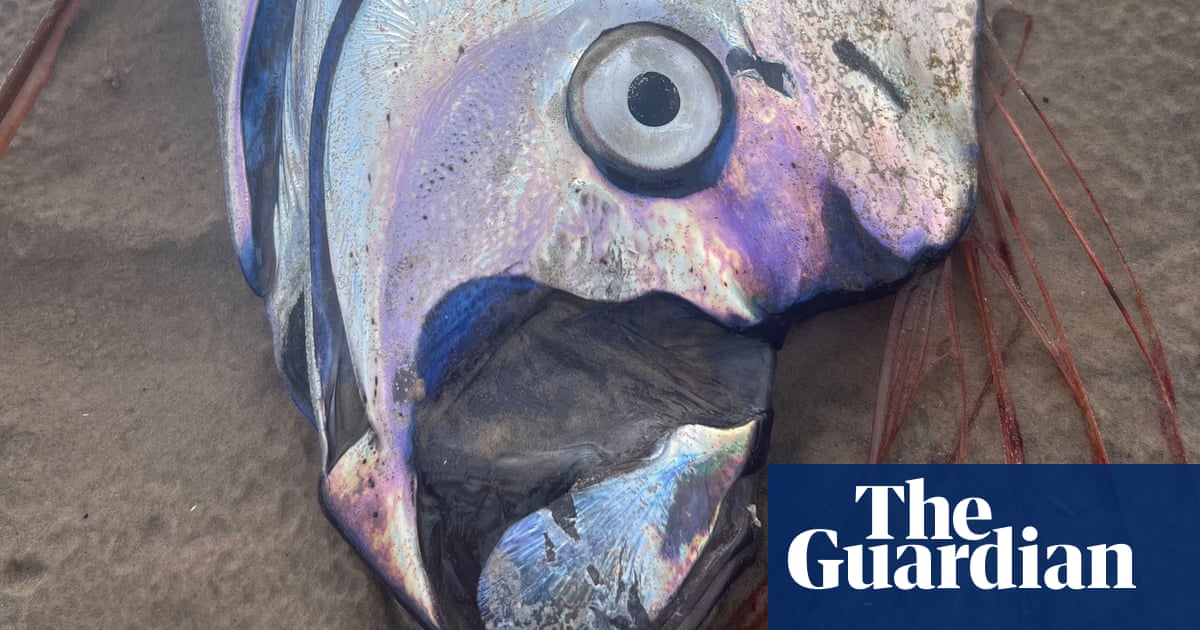At first it looked like a great silver streak on the sand. An oarfish, fantastically long and rarely seen, had washed up on Tasmania’s rugged west coast.
Oarfish, one of the ocean’s longest fish, are astonishing creatures that grow up to eight metres long. Nicknamed the “king of herrings” or more unkindly the “doomsday fish”, some legends and stories consider the animals to beharbingers of disaster.
Sybil Robertson made the unusual discovery while walking on Ocean Beach near Strahan, on Monday.
Sign up for Guardian Australia’s breaking news email
“When I go out there, I’m the only person on the beach,” she said. “It’s really wild. There’s nothing between here and Argentina.” On Monday, she walked in a different direction than usual and noticed a group of sea eagles inspecting the fish, which she estimated was around three metres long, on the sand.
“I’m five foot nine, and I’ve got a reasonable stride, [it was] a good three-and-a-bit paces,” she said.
“It was fantastic,” she said, although not realising what it was. “I just knew it was something unusual and weird.” But her find was quickly identified as an oarfish when she posted a photo on the Citizen Scientists of Tasmania social media page.
“Its exceptionally unusual to see anything like that,” said assoc prof Neville Barrett, a marine ecologist at the University of Tasmania. Oarfish are an “epipelagic” species, he said, living in the open ocean at mid-water depths of 150 to 500m, from where they are rarely seen or caught.
“We’re just not out there,” Barrett said. “We’re not looking, we’re not diving, we’re not even fishing in that part of the ocean.”
Oarfish are “a phenomenally big fish” he said, which can weigh more than 400kg. He described them as a lazy fish with very little muscle that tends to float around, often vertically in the water, eating various types of plankton.
“They’re not active feeders. They don’t chase their prey. They’re just nibbling on whatever’s there. So they don’t have to be very strong, or great swimmers,” he said.
Very few people have seen an oarfish in the wild. Marine biologist Jorja Gilmore is “one of the lucky ones”.
In 2022, she was leading a small tour group of snorkellers on the Great Barrier Reef near Port Douglas when they spotted something strange in the water below them.
This one was a juvenile, long and thin like a ruler, with tendrils that made it look a bit like a giant lure, Gilmore said.
“It was so bizarre”, she said, “like something from the deep sea”.
The incredibly rare encounter is thought to be thefirst recordedwith this species on the east coast of Australia. “It’s still the best thing I have seen in the water to this day,” Gilmore said.
Robinson feels fortunate to have come across the fish in such good condition. A few hours later the head was gone, and the body was already decimated by crows and eagles, she said.
“It’s just so interesting what you can find if you just keep your eyes open whilst you’re looking around. It’s just amazing.”
